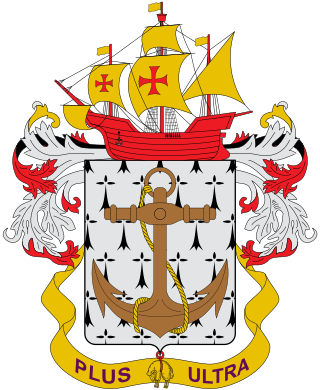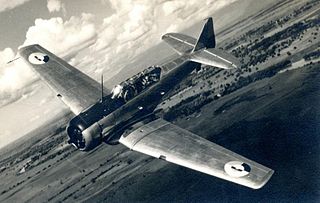
The Archipelago of San Andrés, Providencia and Santa Catalina, or San Andrés and Providencia, is one of the departments of Colombia, and the only one located geographically in Central America. It consists of two island groups in the Caribbean Sea about 775 km (482 mi) northwest of mainland Colombia, and eight outlying banks and reefs. The largest island of the archipelago and Colombia is called San Andrés and its capital is San Andrés. The other large islands are Providencia and Santa Catalina Islands which lie to the north-east of San Andrés; their capital is Santa Isabel.
Intrepid, Intrepida, Intrepide, Intrepido, or similar, may refer to:

Bajo Nuevo Bank, also known as the Petrel Islands, is a small, uninhabited reef with some small grass-covered islets, located in the western Caribbean Sea at 15°53′N78°38′W, with a lighthouse on Low Cay at 15°51′N78°38′W. The closest neighbouring land feature is Serranilla Bank, located 110 kilometres to the west.
USS Hale may refer to the following ships of the United States Navy:

USS Groton (PF-29), a Tacoma-class frigate, was the first ship of the United States Navy to be named for Groton, Connecticut.

The Colombian Navy, officially the Colombian National Navy, also known as the "Armada Nacional" or just the "Armada" in Spanish, is the naval branch of the military forces of Colombia. The Navy is responsible for security and defence in the Colombian zones of both the Atlantic (Caribbean) and Pacific oceans, the extensive network of rivers inside the country, and a few small land areas under its direct jurisdiction.
USS Carib (AT-82) was a Cherokee-class fleet tug constructed for the United States Navy during World War II. Her purpose was to aid ships, usually by towing, on the high seas or in combat or post-combat areas, plus "other duties as assigned." She served in the Atlantic Ocean and the Pacific Ocean.

USS Portunus (ARC-1) was an LSM-1-class landing ship medium acquired by the U.S. Navy for use during World War II as a landing craft for troops, and later, as a cable repair ship.
A number of ships of the Spanish Navy have borne the name San José in honour of Saint Joseph

USS Burlington (PF-51) was a Tacoma-class frigate in commission from 1944 to 1945 and from 1951 to 1952, the only United States Navy ship thus far to have been named for Burlington, Iowa. She also served in the Soviet Navy as EK-21 and in the Colombian National Armada as ARC Almirante Brión.

USS Ruchamkin (APD-89), ex-DE-228, later LPR-89, was a United States Navy high-speed transport in commission from 1945 to 1946, from 1951 to 1957, and from 1961 to 1969. She subsequently served as ARC Córdoba in the Colombian Navy, until 1980; although scrapped, her hull and superstructure were re-erected in a leisure park near Bogotá.

USS Umpqua (ATA-209), originally designated ATR-136, was laid down as ATA-209 on 15 December 1944 at Port Arthur, Texas, by Gulfport Boiler & Welding Works; launched on 2 February 1945; and commissioned on 2 April 1945. She was the third United States Navy ship named for the Umpqua River, which was named for the Umpqua, a tribe of American Indians.

The history of Colombia during World War II began in 1939. Although geographically distant from the main theaters of war, Colombia played an important role in World War II because of its strategic location near the Panama Canal, and its access to both the Atlantic and Pacific Oceans. Colombia also experienced major changes to its military and society, due to increased influence from the United States, but it was also able to maintain its sovereignty throughout the war, as well as avoid sending troops into battle.
BRP Andrés Bonifacio has been the name of more than one Philippine Navy ship, and may refer to:
Two ships in the Colombian Navy have been named 7 de Agosto, a reference to Battle of Boyacá Day, which commemorated the Battle of Boyacá, a major battle during the campaigns to free South America from Spanish rule. The two ships are:

ROKS Iri (PCC-768) was a Pohang-class corvette of the Republic of Korea Navy. Renamed ROKS Iksan in 1999. She was decommissioned and donated to the Colombian Navy under the name ARC Almirante Tono (CM-56) in 2016.

USS Rockville (EPCER-851), also named USS PCE(R)-851,PCER-851 and ARC San Andres, was a PCE-842-class patrol craft of the United States Navy, Colombian Navy, and Columbian Coast Guard. Throughout its service, she served a multitude of roles, including as a hospital ship, survey ship, evacuation ship, and research ship between 1943 and 1986.
This page is based on this
Wikipedia article Text is available under the
CC BY-SA 4.0 license; additional terms may apply.
Images, videos and audio are available under their respective licenses.










